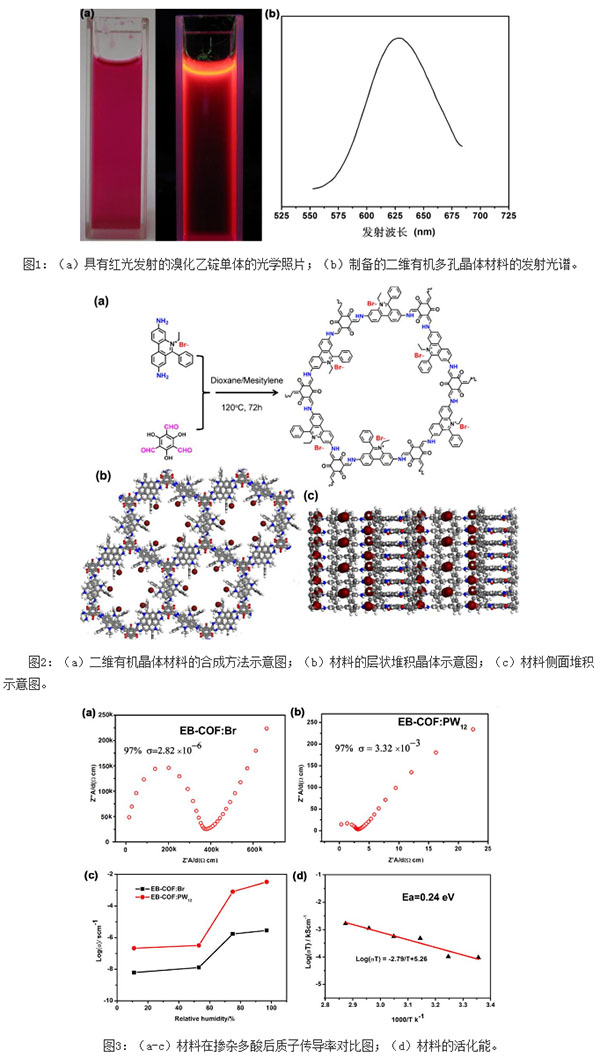Recently, the research group led by Li Bin, a researcher of the National Key Laboratory of Luminescence and Applications of the Changchun Institute of Optics, Fine Mechanics and Physics, Chinese Academy of Sciences, independently designed a positively charged ethidium bromide organic monomer with red light emission. For the first time, a charged organic two-dimensional porous crystal framework material is prepared, which will have important application prospects in the field of organic semiconductor devices and photoelectric sensing. The results of the above study were published in the International Journal of Chemicals (J. Am. Chem. Soc., 2016, DOI: 10.1021/jacs.5b13490). The first author was Assistant Researcher Ma Heping, who obtained the country's work. Natural Science Fund project funding.
Two-dimensional layered materials are a new type of emerging material in recent years. Especially in 2004, the discovery of single atomic layer graphene greatly promoted the development of two-dimensional materials, which quickly became the research frontier. However, since graphene has almost no energy gap, its use in semiconductor devices is limited. Compared with graphene, the inherent natural bandgap structure of two-dimensional layered semiconductor materials makes them have great application potential in the field of microelectronics and optoelectronics. Among them, two-dimensional layered organic porous crystalline materials have a wide range of organic light-emitting functional groups, adjustable photoelectron mobility, and excellent photoelectric conversion properties, making them useful in photoelectric sensing, organic semiconductor devices, field effect transistors, and organic solar cells. Wide application space. However, since the monomers of the synthesized organic porous material are mostly electrically neutral, it is a challenge to prepare a charged crystalline organic porous crystalline material and adjust its conductivity to protons or electrons.
The material prepared by Li Bin's group has a nanopore structure, and its pore size can be regulated by the balance of anions in the framework. By cooperating with the professors of Northeast Normal University, Ji Hongkai and Zhu Guangshan, the phosphotungstic acid of keggin type heteropoly acid was doped into the framework. Due to the abundant oxygen sites on the surface of phosphotungstic acid, the material can hold a large amount of water to form a hydrogen bond network. Protons can The high-speed migration through the hydrogen bond network significantly increases the material's conductivity to protons. The doping of polyacids increases the material's conductivity to protons by three orders of magnitude. Moreover, the nanopore structure of the material and the uneven electric field distribution on its surface have local confinement effects on protons and electrons. By adjusting the electric field distribution in the pores, the conductivity of the material to protons can be changed. Such charged organic two-dimensional crystalline materials will have potential applications in organic semiconductor devices and photoelectric sensing.

Sliding Locks,Keyless Double Sided Lock,Aluminum Sliding Door Lock,Sliding Door Magnetic Lock,double side handle with key
BOGO HARDWARE & FITTING CO.,LTD , https://www.bogohardware.com
